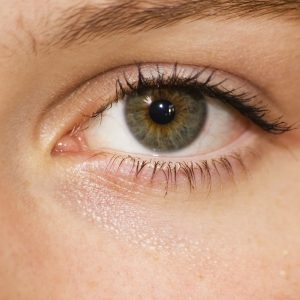Enhance your career with more in depth knowledge on why humans see, touch, smell, taste and hear the world around us like we do. The course also shows with practical examples how our body is able to move and how to improve flexibility, performance and posture. This course covers: nerves, the nervous system, motor skills, structure & function of skeletal muscle, muscular strength, endurance and flexibility.
COURSE STRUCTURE
There are 8 lessons as follows:
- How Nerves Work –
how nerves cause reactions in the human body. - Nerves & Motor Skills –
how the nervous system affects motor skill performance - Skeletal Muscle –
function and structure of skeletal muscle in the human body - Muscle Organisation –
organisation of muscle tissue in the human body - Muscular Movement –
mechanics of muscular movement - Muscular Development –
development of muscular strength and muscular endurance. - Muscle Flexibility –
selecting muscular flexibility exercises - Muscles & Posture –
significance of muscles to posture and general well being.
Each lesson culminates in an assignment which is submitted to the school, marked by the school’s tutors and returned to you with any relevant suggestions, comments, and if necessary, extra reading.
AIMS
- Explain how nerves cause reactions in the human body.
- Explain how the nervous system affects motor skill performance.
- Explain the function and structure of skeletal muscle in the human body.
- Describe the organisation of muscle tissue in the human body.
- Describe the mechanics of muscular movement.
- Explain development of muscular strength and muscular endurance.
- Selecting muscular flexibility exercises.
- Explain significance of muscles to posture and general well being.
WHAT YOU WILL DO IN THIS COURSE
Here are just some of the things you will be doing:
- Draw a cross section of the spinal cord, and label the anatomical parts.
- Explain what happens when an electrical stimulus is sent along the central nervous system, by illustrating and labelling the reflex arc.
- Explain nerve to nerve synapses, during a specific body movement.
- Explain activity at muscle-nerve junctions, during the specific body movement.
- Explain how proprioceptors function, during the specific body movement.
- Explain processes which occur in the nervous system, when a specific muscle moves.
- Explain the functioning of the following different sensory receptors:
- smell
- sound
- balance
- Distinguish between the functions of the following different neuroglia:
- Astrocytes
- Oligodendrocytes
- Microglia
- Ependymal cells
- Neurolemmocytes
- Satellite cells
- Explain how the function of different parts of the brain affect different specific muscular movements in the body.
- Explain how a specific voluntary skill is learnt by the body.
- Explain the dampening affect, as exerted through the cerebellum.
- Explain how the body perceives speed through the nervous system.
- Explain the operation of tendons, during a specific movement of a limb.
- Compare the function of motor with sensory fibres in nerves supplying muscles.
- Compare differences in the structural characteristics of red and white muscle fibres.
- Summarise events occurring during muscular contraction, at a microscopic level.
- Explain how muscles of the hand move when you pick up a tennis ball.
- Prepare diagrams showing the muscles in the back which provide both support and movement for the spinal column.
- Explain the significance of these muscles to health, wellbeing and mobility.
- Explain the principle of levers related to an observed muscular movement.
- Explain the principle of moments related to an observed muscular movement.
- Explain muscular movements which occur in the observed subjects, when using three different types of exercise machines.
- Explain three different body movements, in terms of the action of different bones, muscles and nerves; including the movement of a limb in exercise, and the bending of the back, and one hand movement.
- Distinguish between isotonic, isometric, eccentric and isokinetic contractions.
- List ways how strength can be maintained and increased.
- List ways how endurance can be maintained and increased.
- Explain three different physiological changes which accompany increased strength.
- Explain the overload principle, related to muscular development.
- Explain biological processes in force to effect strength and endurance in an athlete observed and interviewed by you.
- Compare static and dynamic flexibility, in an individual observed by you.
- Explain the structural limits to flexibility, in three different people of different ages.
- List ways of developing flexibility in a specific individual.
- Explain the relationship between flexibility and aspects of performance in a specific case study.
- Develop an exercise program to develop/maintain flexibility for a person.
- Submit photos together with comments on the posture of each person you studied. Comment on the age, sex &, occupation of each of these people.
- How might posture affect general well being, including arthritis and back pain.





